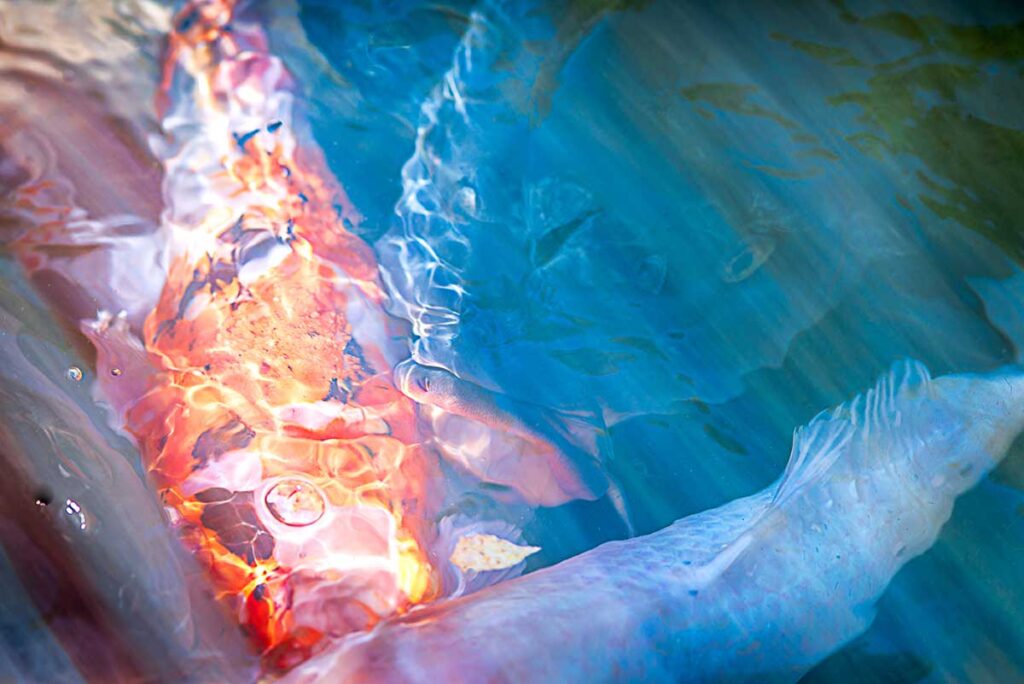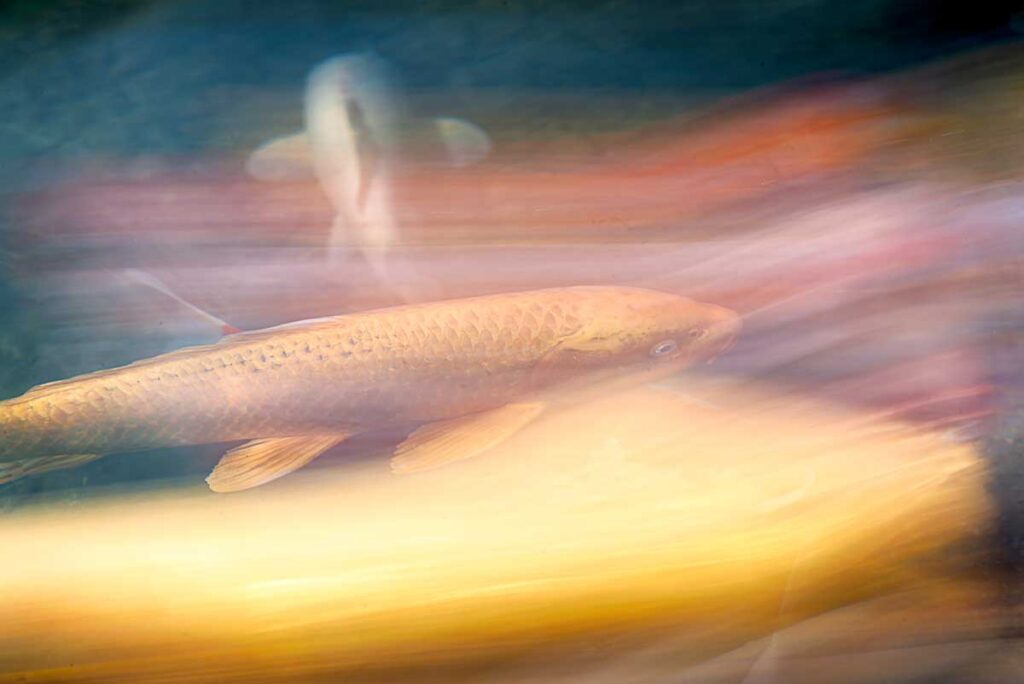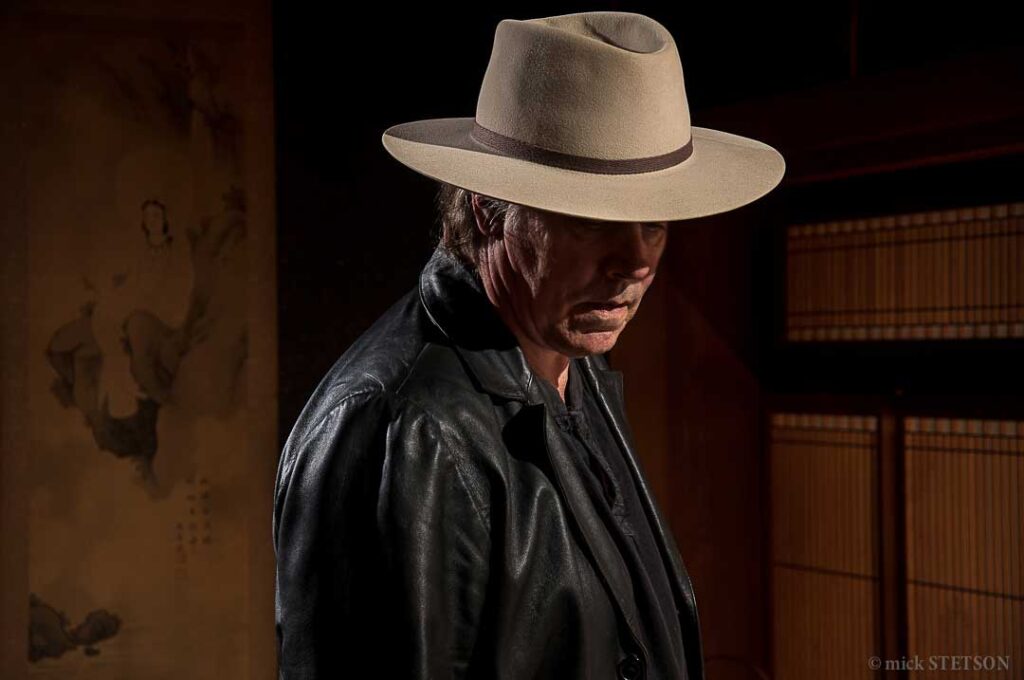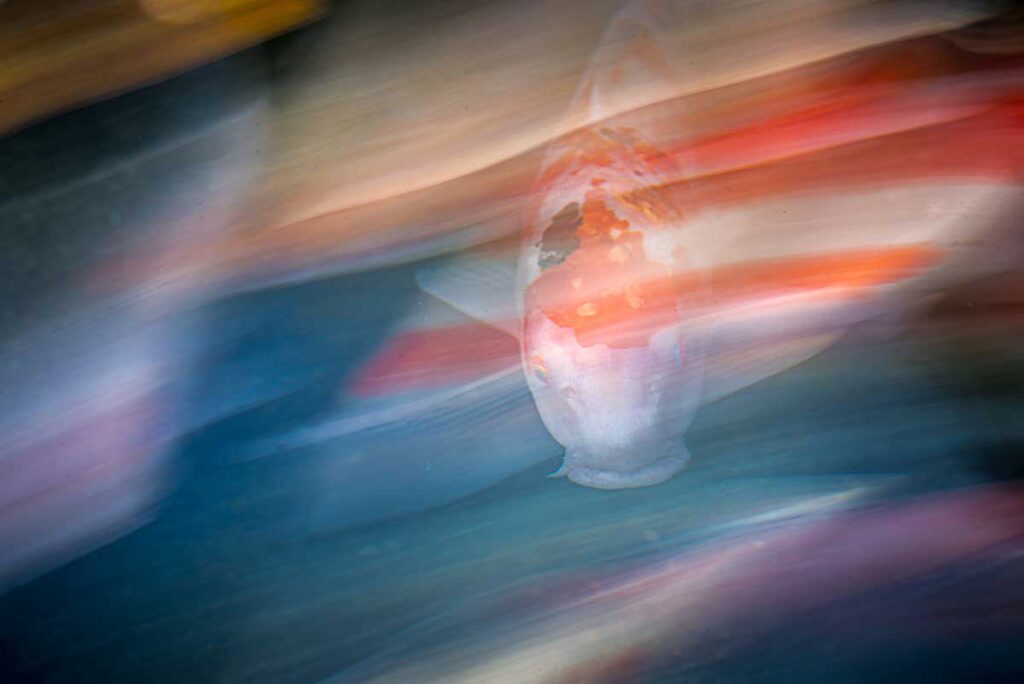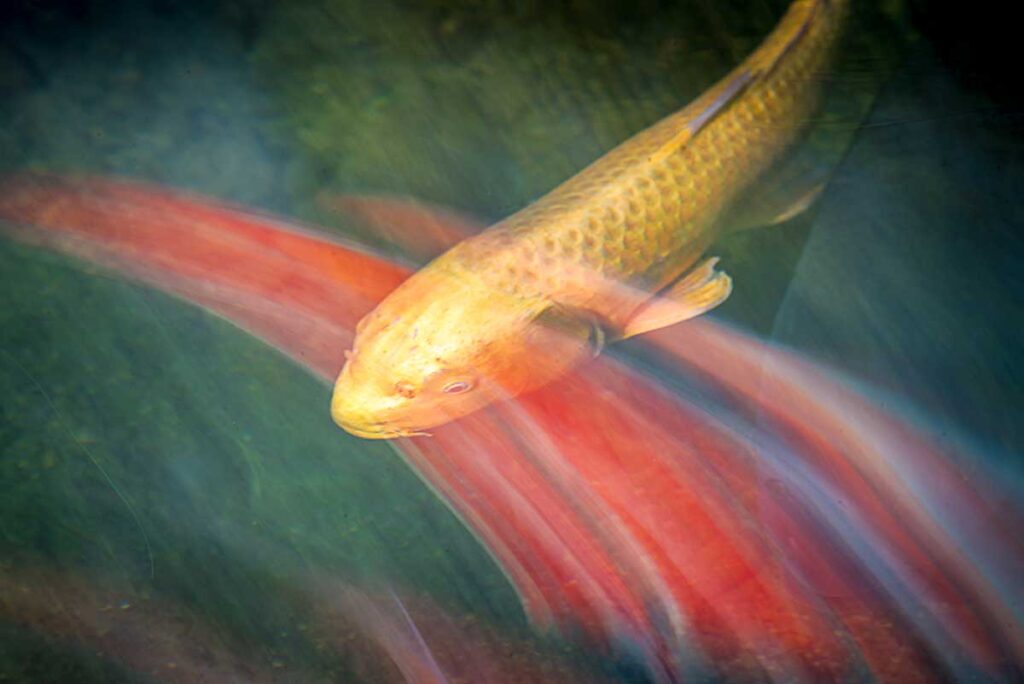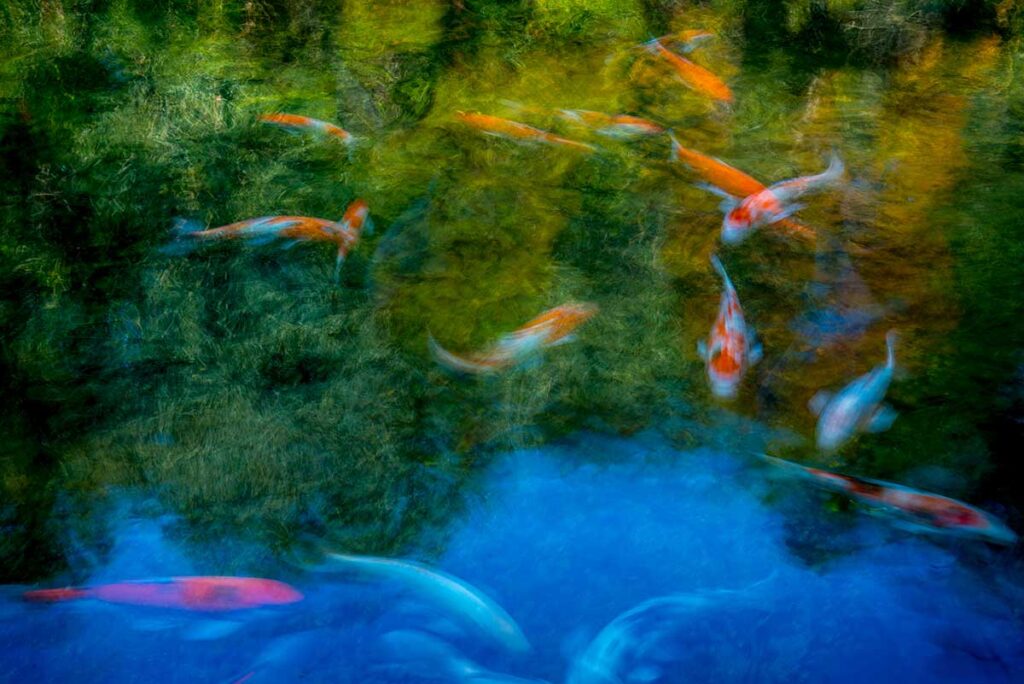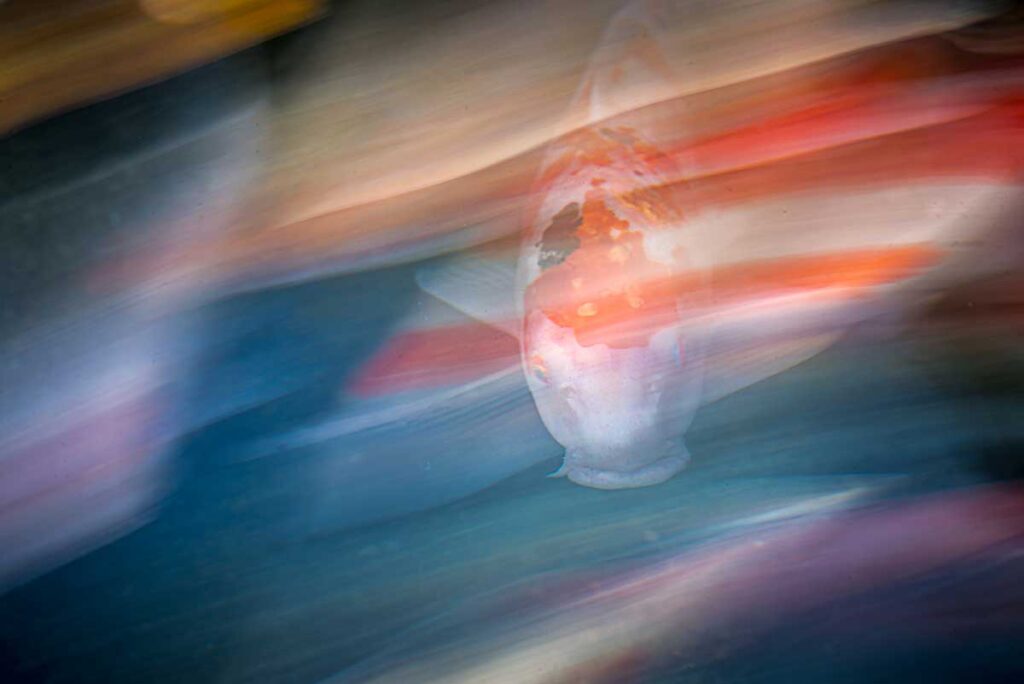MICK STETSON | Reveries of Giverny
“The roots for this series began a few years ago by experimenting with a new technique involving motion.
In this series, the subjects are the denizens of a Shinto shrine pond. There was nothing spectacular about the environment — the kaleidoscope of fall foliage had disappeared, and the greys and browns of winter were creeping in. Then I began watching the koi fish, observing their movements interactions, not only among themselves but also with me. At that moment, I thought of the Impressionists and wondered if I could make images of these koi as if they were being painted and not photographed.
I started thinking of my camera as a painter’s brush moving over the canvas, sometimes making broad strokes of light, other times dashes of color, using different shutter speeds with varying apertures in the same image. The challenge I had set for myself was to make these images “in-camera” without the wizardry of computer technology.
Each time I returned to the pond, I found another exciting aspect to photograph as well as a problem. Resolving the problems became the catalyst for determining the different ways of photographing the koi and the stories I imagined they were telling.”
– Mick Stetson
MICK STETSON
Mick Stetson is a photojournalist and freelance photographer specializing in documenting cultures and people from remote regions within Asia.
Although Stetson is primarily self-taught, he has studied with some of the top professional photojournalists and editorial photographers in the world: Bill Allard, Jay Maisel, Steve McCurry, and Joe McNally.
Since 1997, he has been based in Asia, first in South Korea and now in Japan. Living inside these vibrant, dynamic cultures has enabled him to gain a deep understanding of Asia’s multicultural diversity.
As he explains:
“Asian culture is a mosaic of language, traditional customs, beliefs, and cultural behavior that eludes simple analysis, description, and clarification. To the uninitiated audience, and from the cursory perspective of the traveler, Asia can be an extraordinary and complicated subject that is difficult to communicate — visually — its essence. It takes time to get a sense of something so elusive it doesn’t show itself to you right away. It’s like ‘Satori’ in Zen Buddhism or ‘Darshan’ in Hindu philosophy.”
Living inside these vibrant, dynamic cultures has enabled him to gain a deep intuitive understanding of Asia’s multicultural diversity. So over time and by immersing himself in these environments, he has learned to see and experience Asian culture from an insider’s perspective.
Stetson photographs people and culture. His sensitivity and intimate knowledge about his subjects allow him to record “living histories” as they unfold in their natural environment.
As a photographer, it remains his goal not only to depict something as editorial or socio-historical evidence but also to express, artistically, the dignity of the moment and its participants.
One of the trademarks of Stetson’s work is his effective use of evocative and saturated colors to express the complexities of Asian life. His images resonate with a full range of emotions that emanate not only from the subject he is capturing but also from the unseen hand of the photographer. By combining strong composition with social content and fine art aesthetics with a journalistic style, Stetson creates images that transform an ordinary moment to give that moment a documentary context yet simultaneously transcends it.
“According to the myths, the emperor of Japan and his ancestral line were created by the Shinto gods in 660 BC. The family originates from Kyushu Island. For this reason, the ancestral tomb is located in Kyushu, a short distance from where I live. When the emperor and his family visited the ancestral tomb, they also visited the small shrine (located in a tiny village) where I took these photographs. Hence, the inspiration for the haiku I wrote, “…koi unfurl dreams and legends, in dervish whirls below.”
Along with many awards, Stetson’s photographs have been published and exhibited worldwide. He is currently based in Japan, where he continues to photograph personal projects, exhibits his images in galleries, and publishes his work in international publications. In addition, he lectures at universities and conferences in Japan and around the world.
He is actively pursuing research that includes documentation of the Silk Roads — its material culture and the remnants of cultural/ethnic diversity that it once engendered.
Main Website: www.mickstetson.photography
Additional Website: mickstetson.com
Facebook: @mickstetsonphotography
Instagram: @mickstetson

